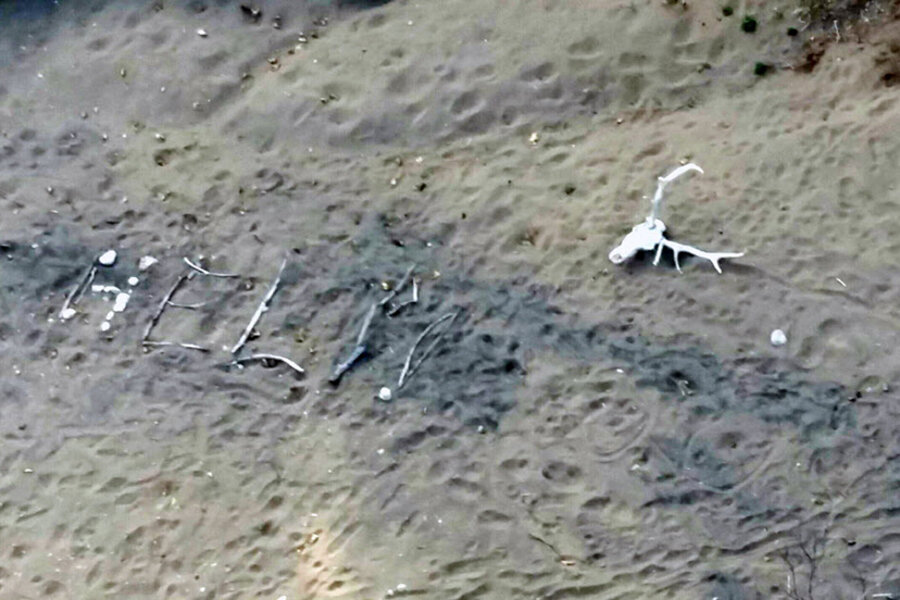How a woman and her dog survived nine days in the Arizona wilderness
Loading...
When Ann Rodgers got in her car on March 31, intending to drive to Phoenix to surprise her daughter and her grandchildren as her 72nd birthday approached, she had no idea the trip would turn into a nine-day odyssey of survival in Arizona's White Mountains.
After a series of attempts to find her after discovering Ms. Rodgers' car had been abandoned days earlier, rescuers eventually located her using a set of tracks and a sign made of elk bones that spelled out "Help!"
"I was eating desert plants. My dog was too, diving into clovers and finding all the places that were the easiest to go," the Tucson woman told local station KOLD on Tuesday. "She was my pathfinder on that journey."
After her hybrid car ran out of fuel and she found herself far beyond the reach of a gas station, Ms. Rodgers, accompanied by her dog and cat, decided to spend the night on the road.
Quickly, the tale turned into a story of survival, aided by Rodgers' early life spent surrounded by nature and her practice of Reiki, a form of traditional Japanese therapy, she told the Washington Post.
Her rescue came only days after three men who had spelled out "Help" using a series of palm fronds were found by rescuers on a Pacific island.
After their boat capsized, they swam to a tiny Micronesian island and were found two days later.
But Rodgers' story would prove to be longer-running. On the third day, unsure when she might be rescued, she found she was quickly running out of water, and faced with a choice.
"I knew very well that you're never supposed to abandon your vehicle," Rodgers told the Post, "but the choice was either leave it or go without water. And how long can you do that in the desert?" So she left her cat, Nike, in the car and set out with her dog, Queenie, quickly discovering a creek with fresh water.
But she continued on undeterred, unaware that a friend had launched a campaign to rescue her by contacting local authorities until word reached the Gila County Sheriff's Office.
The journey seemed endless. "They seemed to go on and on and on forever," she told the Post of her surroundings, as she and her dog sought shelter inside a series of crevices and caves.
On April 3, searchers discovered her car, with a hungry cat inside. Finally, on April 9, rescuers first found her dog and the "Help" sign, then spotted Rodgers near the Fort Apache Reservation, where she had started a signal fire.
After nine days, she was suffering from exposure to the elements, but was able to walk and board a rescue helicopter with little assistance, the local Department of Public Safety said. She was reunited with her relatives at a hospital in Payson, Ariz., and later released. The experience, she told the Post, has given her inspiration for future art projects.
"I could definitely paint for the next 20 years all the incredibly beautiful canyons, trees, rivers and rocks that I saw," Rodgers said, likening the scenery to the landscape of Sedona, Ariz. "Those incredibly wonderful geological scenes all around me."





